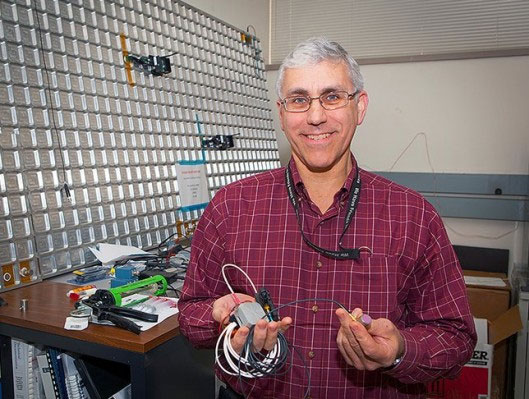The ultrasound system helps determine the gas leak point on the ISS station
According to aerospace expert Eric Madaras at NASA's Langley Research Center, if the gas leak occurs on the ISS space station, the system will alert, astronauts will look for leaks and remedies. process problems.
Despite the support of the tool, they still have to use their eyes and ears to determine the leak. Leakage gas reduces pressure and if there is not enough processing time, things will get worse. So, NASA recently developed a system that helps detect ultrasonic sounds of air that escapes leaks quickly and efficiently.
In 2004, a pressure-reducing leak occurred on the ISS and two astronauts took up to three weeks to detect a leak with a handheld ultrasound detector. This device follows high audio frequencies when the air hisses through the opening. If the fix is not successful, the astronaut will seal each module of the station until the leak point is isolated. But with this incident, the astronauts were lucky because the leak was quite large, so the search time was greatly reduced.

Expert Eric Madaras and 1 of DIDS sensors.
In the silent space, you can easily hear the gas whistling through the gap. However, ISS is a very noisy place with all kinds of noise from the fan system, the pump to the instruments with high intensity. Therefore, even when using ultrasonic detectors, finding a leak will take a lot of time.
Eric Madaras said: "If the phenomenon of leakage occurs, the astronaut does not have enough time to find leaks and overcome, the only thing they can do is to withdraw into Soyuz rescue chamber, close and return However, no one wants to abandon ISS so we are always looking for ways to face this risk. "
Madaras has developed an ultrasonic noise testing system called Ultrasonic Background Noise Test or UBNT . Not only can the leakage point be determined, UBNT can identify other high frequency noise on ISS. To operate, the astronauts on the station will install a range of speed distribution impact sensors (DIDS) inside the pressure-resistant shells of the Destiny and Tranquility modules of the ISS. Each DIDS has 4 pressure-sensitive transducers, which work similarly to magnetic coils in electric guitars. This allows the system to detect hiss from slits and signals sent to many different sensors to help localize the leak location.

Canadian astronaut - Chris Hadfield is installing the UBNT system on the pressure wall of the Destiny module .
In addition, Madaras and the UBNT team can also identify and describe the noise that occurs daily on ISS. Later, they will develop a noise classification system due to air leakage among noise.
The goal of the system is to provide astronauts with an effective tool to shorten the time to find and repair leaks before the pressure drops too low and to resort to a station removal or sealing solution. module.
- There was a way to determine the G point
- The world's best ultrasound technology helps detect abnormalities in the fetus
- Successful treatment of leakage of ammonia gas on ISS station
- Ammonia leak detection on the international space station
- Compact ultrasound, priced at only 100 USD
- 13 splendid train stations like the palace in Russia
- Thanks to the invention of a handheld ultrasound machine, the doctor discovered that he had cancer
- Will mobile ultrasound detect a revolution?
- Ultrasound can early diagnose uterine cancer
- Space station evacuated because of false alarms
- Poison leakage on the ISS station
- Ultrasound helps treat tremor in older people
 Van Allen's belt and evidence that the Apollo 11 mission to the Moon was myth
Van Allen's belt and evidence that the Apollo 11 mission to the Moon was myth The levels of civilization in the universe (Kardashev scale)
The levels of civilization in the universe (Kardashev scale) Today Mars, the sun and the Earth are aligned
Today Mars, the sun and the Earth are aligned The Amazon owner announced a secret plan to build a space base for thousands of people
The Amazon owner announced a secret plan to build a space base for thousands of people